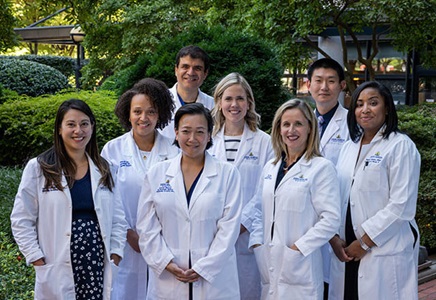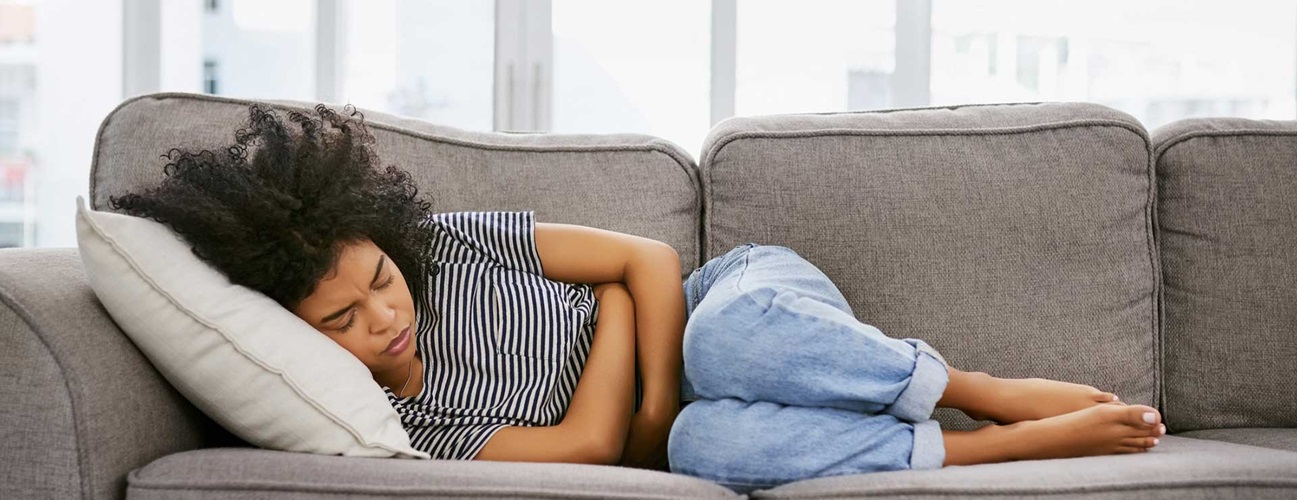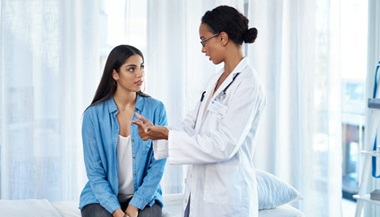Period Pain: Could It Be Endometriosis?
Featured Expert
No woman looks forward to “that time of the month.” Most of us experience mood swings, bloating and cramps, which are never fun. But for those who have endometriosis, getting a period is often particularly unbearable. For them, an average period is anything but average, with debilitating cramps.
During a typical menstrual cycle, the lining inside the uterus — the endometrium — builds up and is then shed. For women with endometriosis, that lining grows outside the uterus, usually around the ovaries or beneath the uterus in an area called the posterior cul-de-sac. As the lining builds up and breaks down, it causes small amounts of bleeding inside the pelvis. This leads to pain, inflammation, swelling and scarring.
If you think you might have endometriosis, you aren’t alone. The condition affects hundreds of thousands of women every year.
Watch out for these five symptoms
Johns Hopkins gynecologist Khara Simpson, M.D. says there are five common signs of endometriosis. Here’s what you should watch out for:
- Painful periods. Most of us have cramps during our periods, but women with endometriosis often have debilitating pain that can prevent them from working or taking care of themselves or family members. “Mild discomfort with periods may be normal, but pain that stops a woman from working or going to school or other daily activities is not normal and should be evaluated by a gynecologist,” Simpson says.
- Chronic pelvic pain. Sometimes, women have chronic and severe pelvic pain even when they don’t have their periods. This can be due to advanced or refractory disease and scarring.
- Painful intercourse. This common symptom, also known as dyspareunia, can be due to endometriosis beneath the uterus. During penetration, women with endometriosis might have intense, localized pain.
- Ovarian cysts. While many ovarian cysts are normal and will resolve without treatment, cysts associated with endometriosis (endometriomas)are another hallmark of endometriosis. They can become large and painful and may need to be surgically removed.
- Infertility. Infertility is defined as not conceiving within one year despite regular sexual intercourse without contraception. About 25% to 50% of women living with infertility have endometriosis, which can lead to infertility by causing scar tissue as well as damage and inflammation to the fallopian tubes. Research also shows that endometriosis can affect egg quality and reduce the number of eggs in the body.
These five symptoms aren’t exclusive to endometriosis, Simpson says.
“It is difficult to determine based on symptoms alone what the source of pain is — i.e., endometriosis versus other conditions — which is why I advise all patients to see a medical practitioner if you have pain with your periods. Additional symptoms that may suggest endometriosis can include dyspareunia — pain with intercourse — and/or dyschezia (pain with bowel movements). ”Pelvic pain can also be caused by scar tissue, previous infections, pelvic floor myalgias or other, nongynecologic syndromes such as painful bladder syndrome and irritable or inflammatory bowel syndromes.
“Importantly,” Simpson points out, “many women with endometriosis do not have pain or symptoms.”
Minimally Invasive Gynecologic Surgery

At Johns Hopkins, our experts specialize in advanced minimally invasive surgical techniques, including complex hysteroscopic, gynecologic laparoscopic/robotic, and fertility related surgery, to treat a range of complex gynecologic conditions such as fibroids, abnormal bleeding, endometriosis and ovarian cysts. Benefits of minimally invasive surgery include faster recovery times, less pain and decreased risk of infection.
Diagnosing and Treating Endometriosis
If you have any of the above symptoms, see your gynecologist. Women with infertility might be referred to a reproductive endocrinologist or a fertility specialist. Some doctors specialize in pelvic pain and endometriosis.
To confirm a diagnosis, your doctor will likely perform a minimally invasive laparoscopy.
“Endometriosis can only be diagnosed surgically,” Simpson explains. “Dysmenorrhea or pain with the menstrual period is one of the hallmark symptoms of endometriosis, but it can occur in up to 90% of women in general, with severe symptoms occurring in up to 30%. It is estimated that 7%–15% of women have endometriosis. Due to the high frequency of dysmenorrhea in the general population as compared to the lower incidence of endometriosis, we often start with conservative therapy such as anti-inflammatories — ibuprofen — and/or birth control.”
“Surgical evaluation is typically performed in women with refractory pain — pain that does not improve with conservative therapy — women suffering from infertility or women with large endometriomas, which are unlikely to improve with conservative therapy.”
During a minimally invasive laparoscopy procedure, a thin, lighted tube is placed into a tiny abdominal incision. This allows the doctor to see the pelvic organs and take a small amount of tissue for biopsy to make a diagnosis.
“If pain or symptoms persist despite conservative therapy or following diagnostic laparoscopy, it may be warranted to seek out an endometriosis or pelvic pain center/specialist for further evaluation,” Simpson says.
Often, symptoms can be controlled with medications such as birth control pills, or gonadotropin-releasing hormone agonists or antagonists (e.g., leuprolide acetate and elagolix). Both suppress the pituitary gland from releasing hormones that stimulate endometriosis. Other conservative options that may help with endometriosis symptoms include:
- Take anti-inflammatory pain medication, such as ibuprofen, at regular intervals as recommended on the medication label, approximately 24 hours before the anticipated start of your period and until the end of it.
- Use heat, such as taking a warm bath or applying a heating pad to the back and lower abdomen.
- If you have bowel symptoms such as bloating or nausea, dietary changes such as reducing processed foods and dairy may help.
- Regular exercise can help increase endorphins and improve mental and physical well-being.
“Severe pelvic pain with periods is not normal,” says Simpson. “Women should seek evaluation and treatment of their symptoms, and get a second opinion if they suspect endometriosis and it has not been addressed by their primary physician.”
Sign Up for Our Free Newsletter

One of the best things you can do to protect and improve your health is to stay informed. Your Health is a FREE e-newsletter that serves as your smart, simple connection to the world-class expertise of Johns Hopkins.







.jpg?h=217&iar=0&mh=260&mw=380&w=380&hash=063F5B68869D830339C77D818A678AD5)